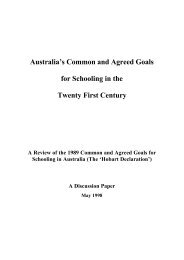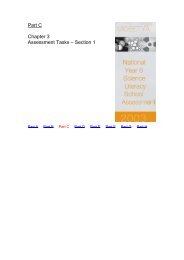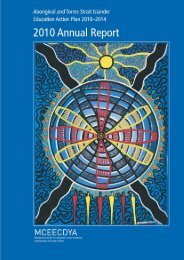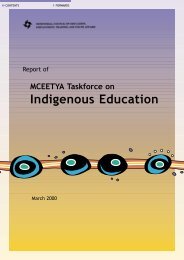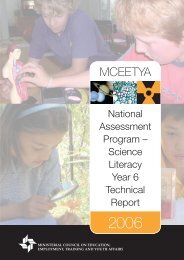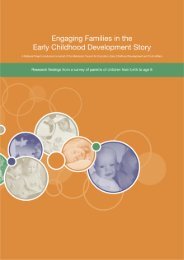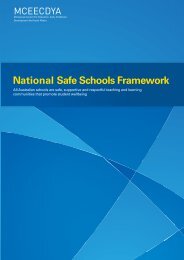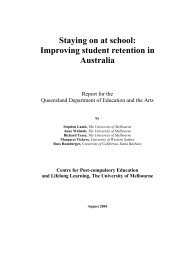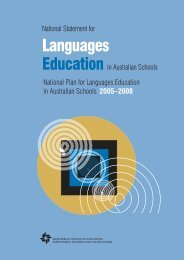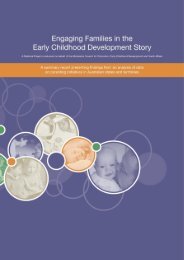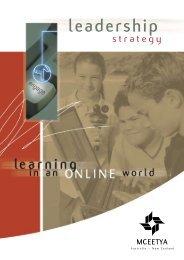Science Literacy 2006 school release materials - NAP
Science Literacy 2006 school release materials - NAP
Science Literacy 2006 school release materials - NAP
Create successful ePaper yourself
Turn your PDF publications into a flip-book with our unique Google optimized e-Paper software.
curriculum and assessment frameworks. The Progress Map describes thedevelopment of scientific literacy across three strands of knowledge which areinclusive of Ball et al.’s concepts and processes and the elements of the OECD–PISA definition.What aspects of scientific literacy wereassessed?Three main areas of scientific literacy were assessed:Strand A:Strand B:Strand C:formulating or identifying investigable questions and hypotheses,planning investigations and collecting evidence.interpreting evidence and drawing conclusions from their own orothers’ data, critiquing the trustworthiness of evidence and claimsmade by others, and communicating findings.using science understandings for describing and explaining naturalphenomena, and for interpreting reports about phenomena.A conscious effort was made to develop assessment items that related to everydaycontexts.The scientific literacy domain is detailed in Appendix B. In addition the itemsdrew on four concept areas: Earth and Beyond (EB); Energy and Change (EC); Lifeand Living (LL); and Natural and Processed Materials (NP). The major scientificconcepts found most widely in States and Territories were used by item developersto guide test development. The list of endorsed examples for each of these majorconcepts is in Appendix C.The intention was to ensure that all Year 6 students were familiar with the<strong>materials</strong> and experiences to be used in the National Assessment Program– <strong>Science</strong> <strong>Literacy</strong> and so avoid any systematic bias in the instruments beingdeveloped.Who participated in the <strong>2006</strong> NationalAssessment Program – <strong>Science</strong> <strong>Literacy</strong>?Approximately 5 per cent of the total Australian Year 6 student population wassampled randomly and assessed. The sample was drawn from all States andTerritories. Government, Catholic and independent <strong>school</strong>s participated.A grade-based population of students enrolled at <strong>school</strong>s was chosen. This isconsistent with the reporting of literacy and numeracy performance in the Annual




